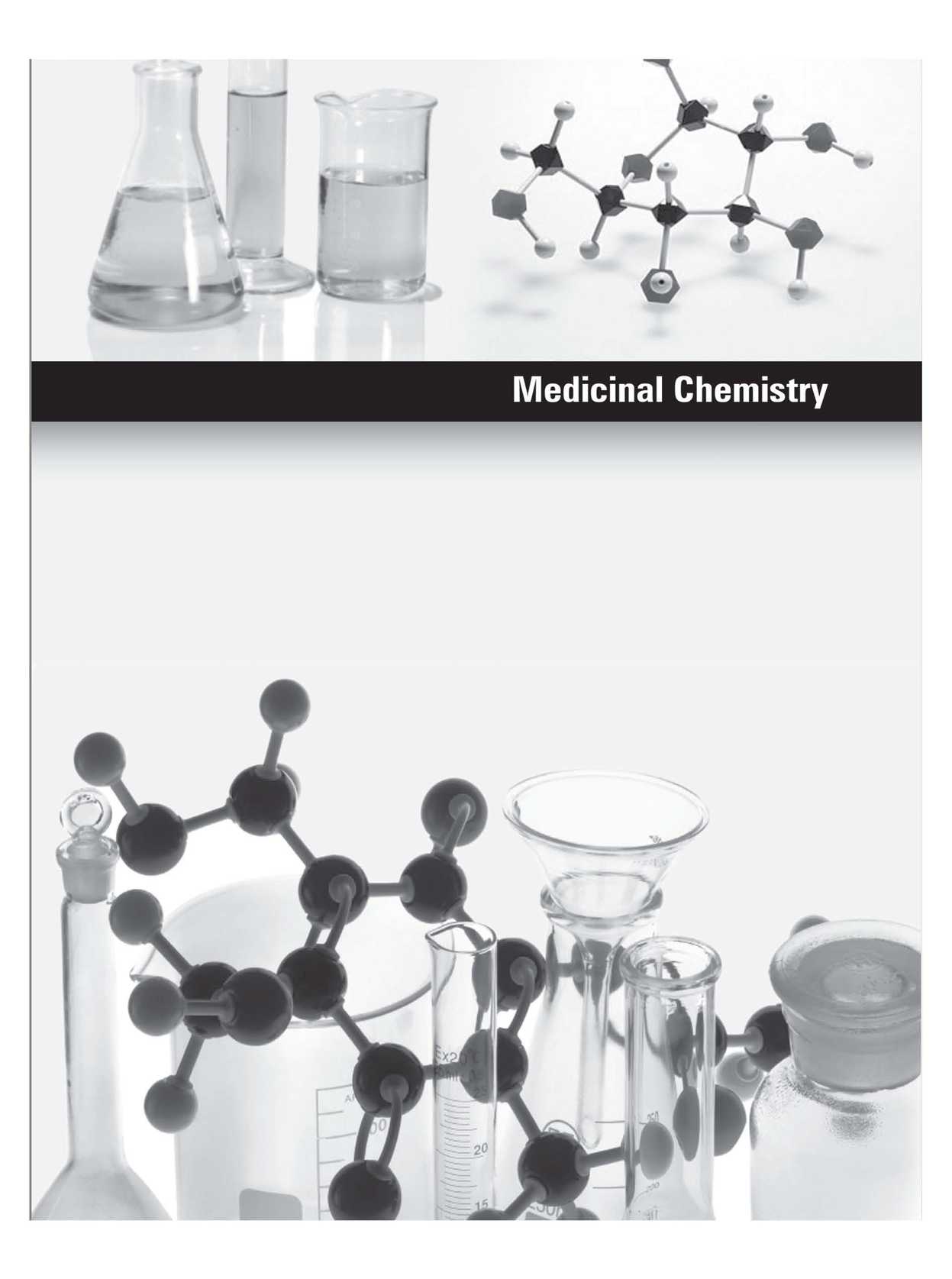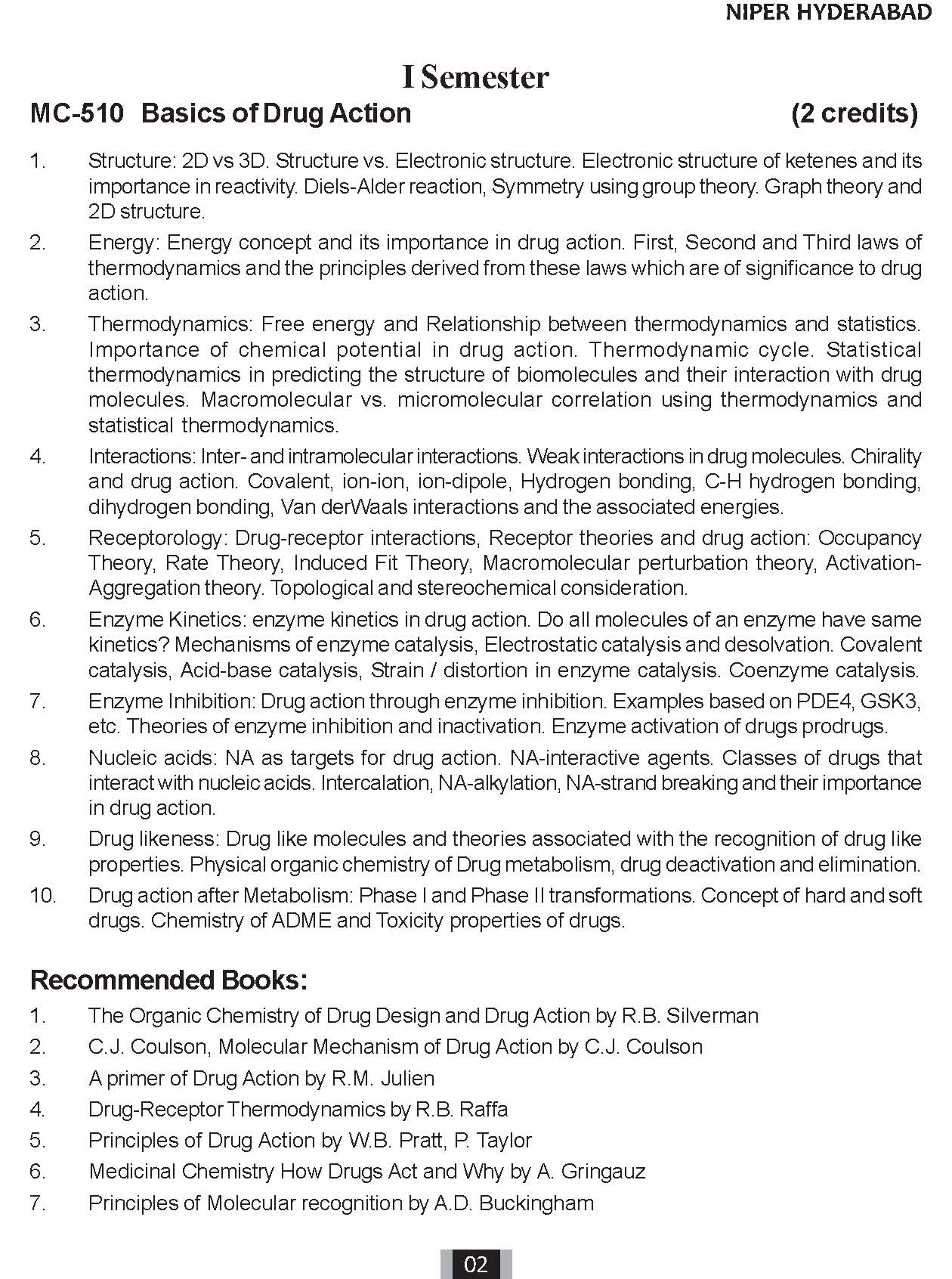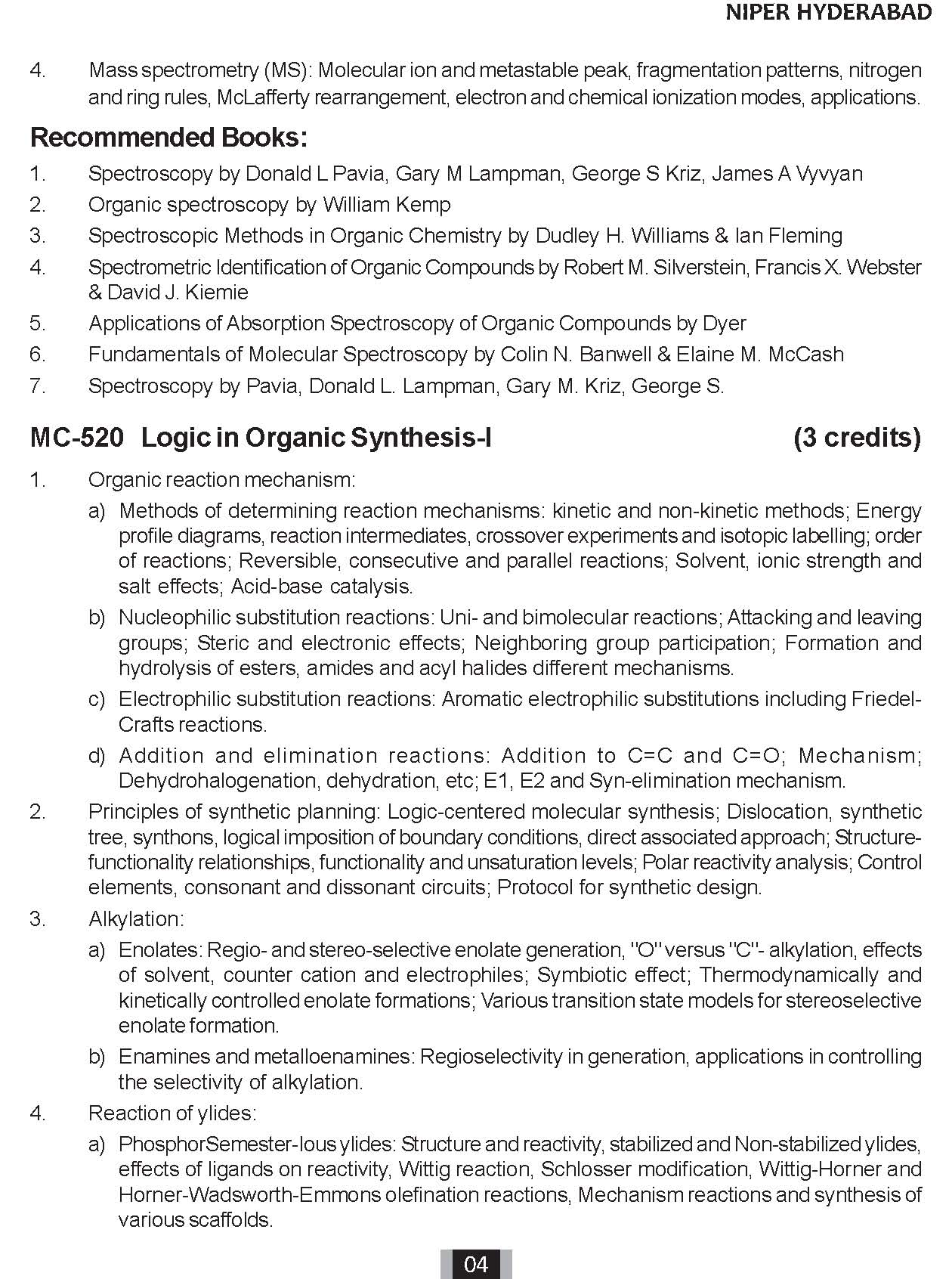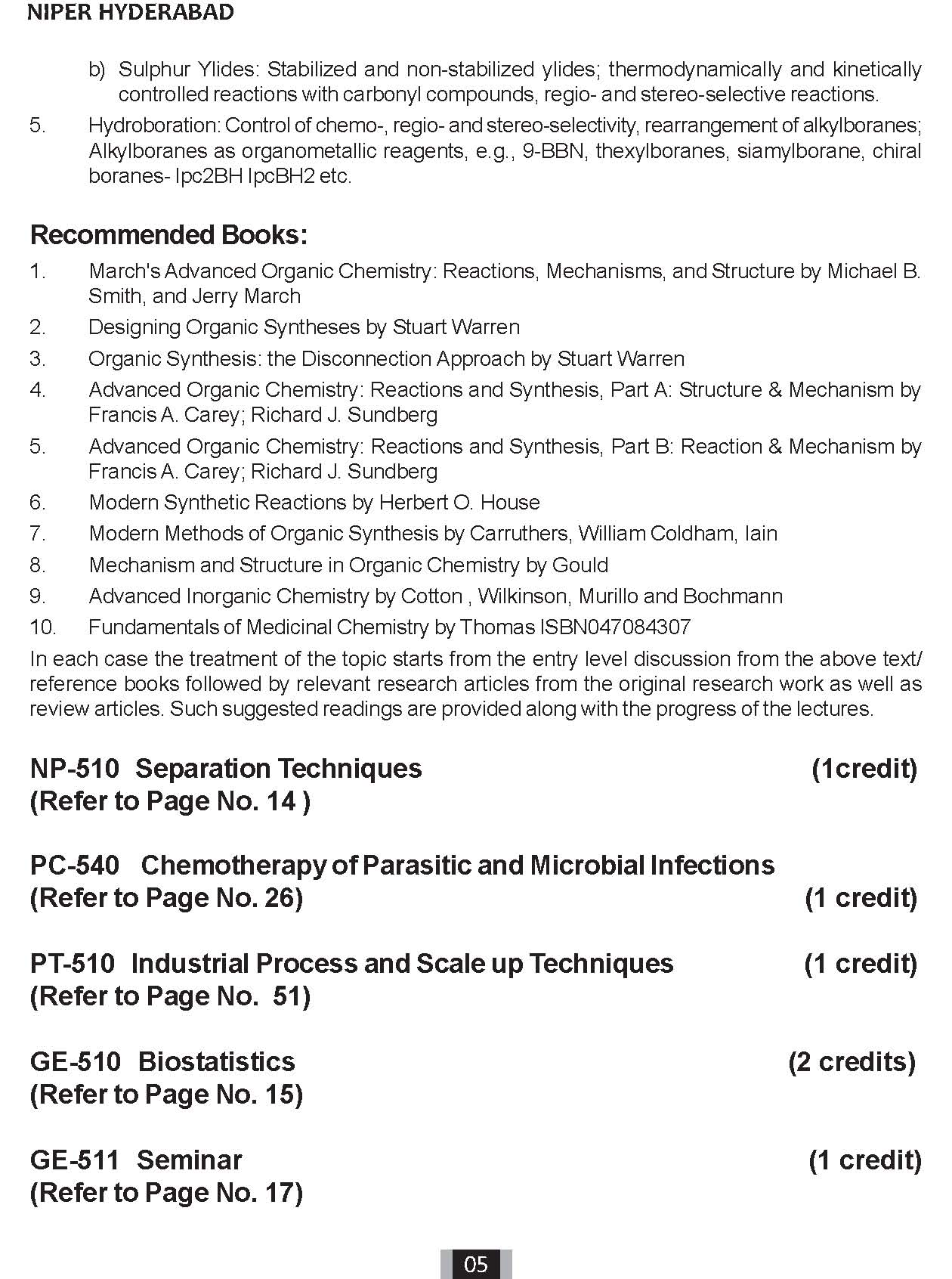|
#2
July 16th, 2016, 04:29 PM
| |||
| |||
| Re: NIPER Medicinal Chemistry Syllabus
The Medicinal Chemistry Syllabus of National Institute of Pharmaceutical Education and Research (NIPER) is as follows: MC-510 Basics of Drug Action (2 credits) 1. Structure: 2D vs 3D. Structure vs. Electronic structure. Electronic structure of ketenes and its importance in reactivity. Diels-Alder reaction, Symmetry using group theory. Graph theory and 2D structure. 2. Energy: Energy concept and its importance in drug action. First, Second and Third laws of thermodynamics and the principles derived from these laws which are of significance to drug action. 3. Thermodynamics: Free energy and Relationship between thermodynamics and statistics. Importance of chemical potential in drug action. Thermodynamic cycle. Statistical thermodynamics in predicting the structure of biomolecules and their interaction with drug molecules. Macromolecular vs. micromolecular correlation using thermodynamics and statistical thermodynamics. 4. Interactions: Inter- and intramolecular interactions. Weak interactions in drug molecules. Chirality and drug action. Covalent, ion-ion, ion-dipole, Hydrogen bonding, C-H hydrogen bonding, dihydrogen bonding, Van derWaals interactions and the associated energies. 5. Receptorology: Drug-receptor interactions, Receptor theories and drug action: Occupancy Theory, Rate Theory, Induced Fit Theory, Macromolecular perturbation theory, ActivationAggregation theory. Topological and stereochemical consideration. 6. Enzyme Kinetics: enzyme kinetics in drug action. Do all molecules of an enzyme have same kinetics? Mechanisms of enzyme catalysis, Electrostatic catalysis and desolvation. Covalent catalysis, Acid-base catalysis, Strain / distortion in enzyme catalysis. Coenzyme catalysis. 7. Enzyme Inhibition: Drug action through enzyme inhibition. Examples based on PDE4, GSK3, etc. Theories of enzyme inhibition and inactivation. Enzyme activation of drugs prodrugs. 8. Nucleic acids: NA as targets for drug action. NA-interactive agents. Classes of drugs that interact with nucleic acids. Intercalation, NA-alkylation, NA-strand breaking and their importance in drug action. 9. Drug likeness: Drug like molecules and theories associated with the recognition of drug like properties. Physical organic chemistry of Drug metabolism, drug deactivation and elimination. 10. Drug action after Metabolism: Phase I and Phase II transformations. Concept of hard and soft drugs. Chemistry of ADME and Toxicity properties of drugs.      |